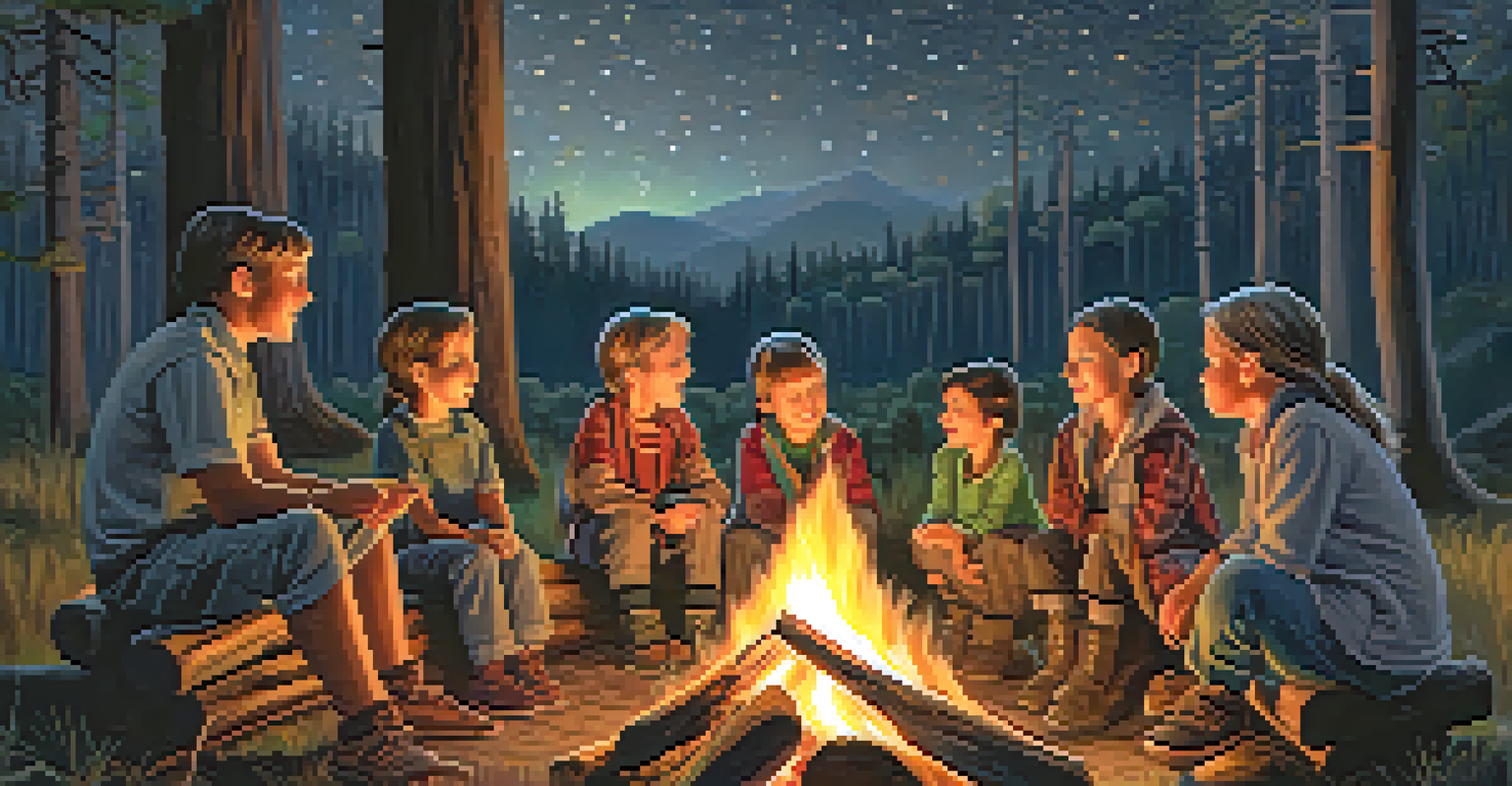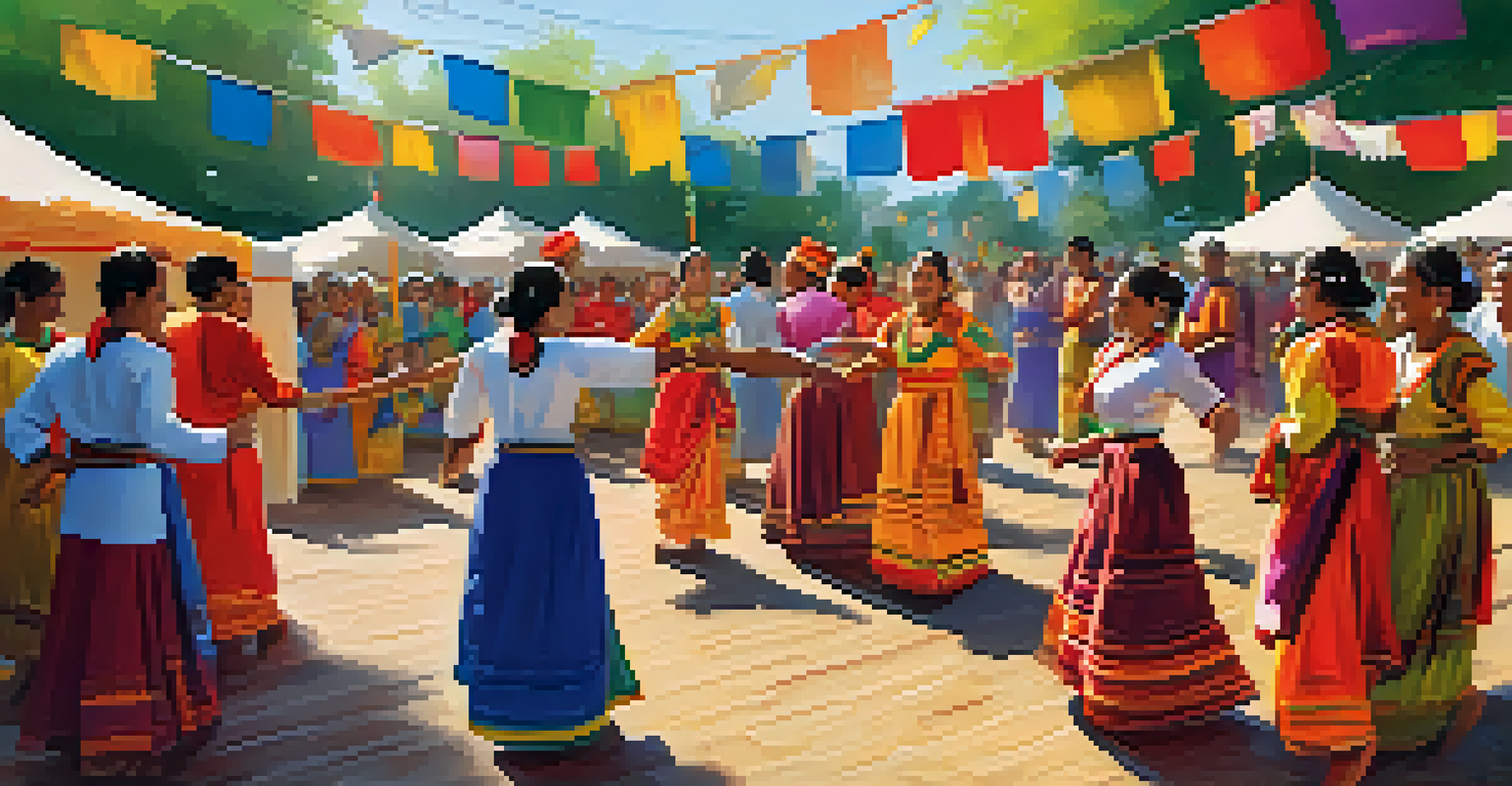The Intersection of Outdoor Learning and Cultural Heritage

Understanding Outdoor Learning and Its Importance
Outdoor learning involves educational experiences outside the traditional classroom. Whether it’s a nature hike, a museum visit, or a historical site tour, these activities encourage hands-on engagement and foster a deeper connection to the subject matter. This approach helps students not only retain information better but also develop critical thinking skills and a sense of responsibility towards their environment.
Education is not the filling of a pail, but the lighting of a fire.
Incorporating outdoor learning into education can transform how students perceive their surroundings. For example, learning about local ecosystems in a nearby park provides context that a textbook simply can’t offer. Students become active participants in their learning, which can lead to a greater appreciation for their cultural and natural heritage.
Moreover, outdoor learning caters to various learning styles. Kinesthetic learners thrive in environments where they can touch, explore, and experiment. This dynamic approach helps to bridge the gap between academic knowledge and real-world experiences, making learning more relatable and impactful.
Cultural Heritage: A Definition and Its Significance
Cultural heritage encompasses the traditions, customs, and artifacts that define a community's identity. This can include tangible elements like buildings and monuments, as well as intangible aspects such as language, music, and rituals. Understanding cultural heritage is crucial as it shapes who we are and helps to foster a sense of belonging within a community.

Preserving cultural heritage is not just about maintaining the past; it’s about nurturing future generations. When individuals engage with their culture, they develop a deeper respect for their history and an appreciation for diversity. This connection can create a more harmonious society where different cultures coexist and thrive.
Outdoor Learning Enhances Engagement
Experiential education outside the classroom fosters deeper connections to subjects and improves critical thinking skills.
For instance, participating in a local festival can be a powerful way to experience cultural heritage firsthand. Engaging with traditional music, food, and dance allows individuals to immerse themselves in the community's history and values. Such experiences help reinforce cultural pride and encourage the passing down of traditions.
The Synergy Between Outdoor Learning and Cultural Heritage
Outdoor learning and cultural heritage complement each other beautifully. When students learn about their heritage in an outdoor setting, they can physically connect with their history. For instance, exploring an ancient ruin or participating in a traditional craft workshop outdoors makes the experience more immersive and memorable.
The best way to predict the future is to create it.
This synergy also fosters a sense of stewardship among students. By understanding the significance of their cultural heritage, they are more likely to advocate for its preservation. This can lead to community initiatives aimed at protecting cultural sites and traditions, ensuring that future generations can also benefit from these rich experiences.
Moreover, outdoor learning offers a platform for storytelling, which is a vital aspect of cultural heritage. Engaging with local elders in natural settings can lead to the sharing of stories and knowledge that are often lost in modern education. This intergenerational exchange enriches the learning experience and strengthens community bonds.
Case Studies: Successful Outdoor Learning Initiatives
Several educational institutions around the world have successfully integrated outdoor learning with cultural heritage. For example, programs like 'Heritage Walks' involve students exploring their local neighborhoods while learning about historical landmarks. This hands-on approach not only educates students about their heritage but also instills a sense of pride in their community.
Another great example is the use of outdoor classrooms in Indigenous communities. These initiatives often include traditional ecological knowledge, allowing students to learn about their heritage while engaging with the natural world. This connection helps to reinforce cultural identity and promote environmental stewardship among young learners.
Cultural Heritage Shapes Identity
Understanding and preserving cultural heritage fosters community belonging and respect for diversity.
Additionally, summer camps that focus on cultural heritage often include various outdoor activities, such as traditional crafts or storytelling sessions by local historians. These experiences not only educate participants about their heritage but also create lasting memories that can inspire future appreciation and preservation efforts.
Challenges in Merging Outdoor Learning with Cultural Heritage
While the benefits of combining outdoor learning with cultural heritage are clear, there are challenges to consider. One major obstacle is the lack of resources and trained educators who can effectively facilitate these experiences. Without proper training, educators may struggle to create meaningful connections between outdoor activities and cultural lessons.
Another challenge lies in access; not all communities have the same opportunities for outdoor learning. Urban areas may lack nearby natural spaces, while rural communities might not have adequate resources to promote cultural education. This disparity can lead to unequal learning experiences for students based on their geographic location.
Finally, there can be resistance from traditional educational systems that prioritize standardized testing over experiential learning. Shifting this mindset requires advocacy and a willingness to embrace innovative teaching methods that value outdoor learning and cultural heritage as vital components of a well-rounded education.
Best Practices for Implementing Outdoor Learning Programs
To successfully merge outdoor learning with cultural heritage, it's essential to implement best practices that ensure a meaningful experience. Firstly, collaboration with local cultural organizations can enhance educational programs. These partnerships can provide resources, expertise, and authentic cultural experiences that enrich the learning process.
Secondly, educators should focus on creating a curriculum that aligns outdoor activities with cultural education goals. For example, incorporating local history into nature walks or using outdoor spaces for traditional storytelling can create powerful learning moments. This approach not only makes lessons more engaging but also demonstrates the interconnectedness of nature and culture.
Synergy of Learning and Heritage
Combining outdoor learning with cultural heritage allows students to physically connect with their history, promoting advocacy for preservation.
Lastly, fostering a reflective practice among students is crucial. After outdoor learning experiences, encouraging discussions or journaling can help students process what they’ve learned and how it relates to their cultural identity. These reflections solidify the connection between outdoor learning and cultural heritage, making the experience more impactful.
The Future of Outdoor Learning and Cultural Heritage Education
As the world continues to evolve, so too must our approaches to education. The future of outdoor learning and cultural heritage education looks promising, especially with the increasing recognition of the importance of experiential learning. More educational institutions are beginning to see the value of integrating outdoor experiences into their curriculum, paving the way for innovative teaching methods.
Technology can also play a role in enhancing outdoor learning. Virtual reality experiences can provide students with a glimpse into historical sites or cultural practices without leaving their classrooms. This technology can complement outdoor learning, offering a richer and more diverse understanding of cultural heritage.

Ultimately, the key lies in fostering a love for learning and a connection to one’s cultural roots. By prioritizing outdoor learning and cultural heritage, we can cultivate a generation that values diversity, embraces stewardship, and celebrates the richness of our shared human experience.